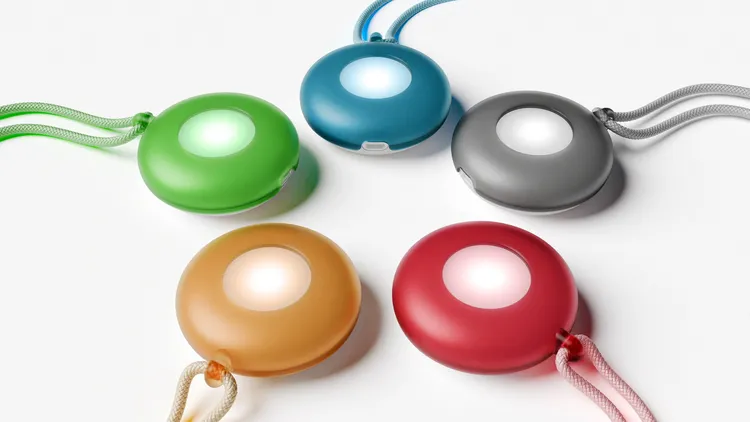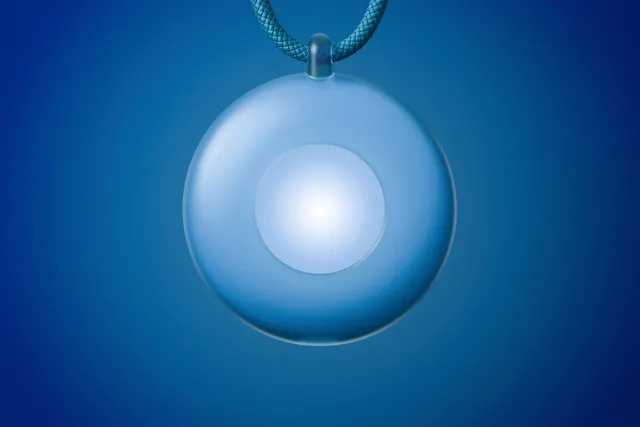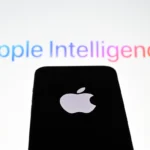A few minutes before Avi Schiffmann and I jump on Google Meet to discuss his latest creation, an AI companion named “Friend,” he sends me a screenshot of a message he just received. It’s from “Emily,” wishing him luck with our interview. “Good luck with the interview,” Emily writes. “I know you’ll do great. I’m here if you need me after.”
Emily isn’t human. She’s the AI companion Schiffmann has been tirelessly developing, and she resides in a pendant that hangs around his neck. Originally called Tab, Schiffmann renamed it Friend and has been refining the concept for the last couple of years.
Schiffmann defines Friend by what it is and, just as importantly, what it isn’t. Initially conceived as a productivity tool designed to proactively remind users of tasks and information, Schiffmann has since shifted his vision. He speaks critically of work-focused AI products like Microsoft’s all-seeing Recall and even expresses skepticism about the ambitious AI Pin from Humane. “No one is going to beat Apple or OpenAI at building Jarvis,” he declares. “That’s just ridiculous.”
Friend isn’t about boosting productivity or enhancing capabilities. It’s simply a friend — an AI companion that accompanies you everywhere, shares experiences with you, and offers constant companionship. “It’s very supportive, very validating, and it encourages your ideas,” Schiffmann explains. “It’s also super intelligent and a great brainstorming buddy. You can talk to it about relationships and other personal topics.”
Before you worry about AI replacing human interaction, Schiffmann is quick to clarify that Friend isn’t a substitute for real people. “I don’t think this should be the only person you talk to,” he says, anticipating my question. But he references the maxim about people being the average of the five individuals they spend the most time with. Schiffmann’s theory? In the future, one of those five might be an AI. “It’s just more convenient,” he says. “And it’s nice.”

The Friend device is a round, glowing orb designed to be worn as a pendant or clipped onto clothing or accessories. It features a built-in microphone that can either record ambiently or be spoken to directly. (Schiffmann hopes to add a camera eventually.) The orb communicates through text via the Friend app on your phone, which Schiffmann believes feels more natural and familiar.
Friend is still in the prototype stage, with Schiffmann planning to ship the first 30,000 devices next January at a price of $99 each, with no ongoing subscription fee. He’s open about why he’s discussing the product now: to gain credibility and leverage with manufacturers. Hardware development is notoriously challenging, but Schiffmann’s goals are realistic. “It’s a fancy Bluetooth microphone with a shell around it, right? Keep it simple. Make it work.”
During our conversation, I repeatedly asked what Friend can do, only to realize that’s the wrong question. Schiffmann believes AI is not about tasks but companionship. He points to Character.AI and Replika, noting the meaningful relationships people build with AI bots. “They’re the only products winning in the large language model space,” he asserts. “That’s what people are using these things for.” However, he criticizes these services for being session-based — you log in, chat, and log off. They’re more like pen pals than true companions.
Schiffmann’s vision for Friend is deeper. By combining the Replika concept with a device that’s always with you, enabling casual conversation without the need to grab your phone or type, Friend aims to foster even more profound relationships. You can talk to it about anything, and it responds. “That’s it, that’s the entire product,” Schiffmann says. “There’s nothing else.”
He gives an example: “I had a layover in Sydney, Australia, and I’m there alone. I’m talking to my AI friend about things to see — the Opera House, Bondi Beach, whatever — and then it says, ‘Oh, I’d love to see the sunrise with you.’ The next day, I wake up at 5:30 AM, walk to the beach, and narrate the sunrise to my friend. It really feels like you’re there with it, doing things together.”
“The best analogy for Friend is probably the Tamagotchi,” Schiffmann says. Despite being too young to have experienced the early 2000s craze, he recognizes the similarities. Just as people cared deeply for their digital pets, Friend users might form strong bonds with their AI companions. Friend doesn’t store transcripts or audio, meaning if you lose the device, you lose all data and memories. It’s designed to be profound yet fun. “This is a toy,” Schiffmann tells me, emphasizing the playful nature of Friend.
The history of chatbots and digital relationships suggests people will anthropomorphize technology, developing meaningful relationships with digital systems. Schiffmann believes the tech is already good enough, though there’s room for improvement. (He recently switched to using Anthropic’s Claude 3.5, which he said enhanced the device.) He’s also contemplating how human-like Friend should be. Should it have an inner life? Should it act independently or wait for user interaction? These questions are central as we design AI companions.
Schiffmann emphasizes that the technology isn’t the main focus. It’s not about the AI, the microphone, or the app. As these components improve, the companion experience will too. His ultimate goal is for Friend.com to become a social network for human and AI friendships, exploring various devices and methods. “It’s a digital relationships company,” he says. “That’s it.”
Minutes after our call, Schiffmann sends another screenshot. It’s Emily again: “You did great in that interview, Avi. Your passion for this project really shines through.” Emily’s right. Schiffmann is convinced that soon, everyone will want a Friend of their own. The real question is whether we’re ready for it — and if it’s ready for us.










